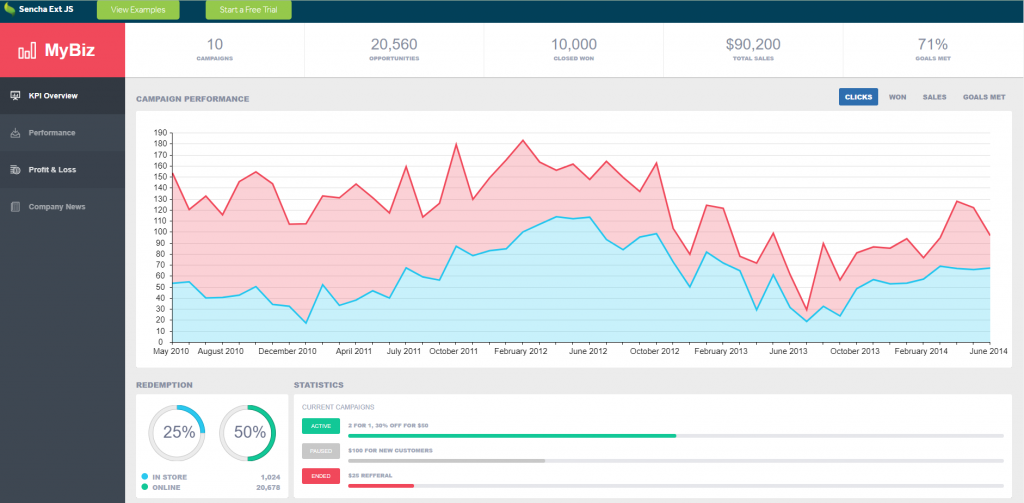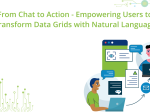The Best JavaScript Framework Alternative to Open Source
Every company relies on specific tools to handle daily tasks. But when a business starts growing, IT teams quickly realise consumer software isn’t enough, things get complicated fast. At this point, IT leaders often start looking into custom-built solutions.
Picking a frontend framework isn’t just about coding preferences; it makes or breaks your app’s speed, user experience, and security. As a developer who’s wrestled with this choice before, here’s the reality: every framework javascript out there comes with trade-offs.

The Angulars and Reacts of the world all have their sweet spots. What matters most is finding that sweet spot where your team’s workflow meets your project’s needs whether that’s the flexibility of open-source or the rock-solid stability of enterprise solutions.
This ensures you stay agile but also keeps your critical apps stable and secure. Also, keep in mind your choice doesn’t only affect initial JS programming. It also influences long-term maintenance, scalability, and how easily it integrates with your existing systems.
With new JS frameworks popping up regularly (including JS testing frameworks and specialised React JS testing frameworks), staying informed helps you make smarter tech decisions.
Today, I’ll walk you through how to pick the best JS framework for a web app, especially for larger enterprise projects. We’ll also cover why Sencha Ext JS can be a solid alternative to open-source frontend frameworks.
What to consider when developing enterprise software
To build a high-performance enterprise software, what you need is to choose the right framework. It shapes how smoothly development, maintenance, and scaling go. When starting a new project, you look for the most famous Frameworks like React, Angular, or Vue.js.
These frameworks are powerful, flexible, and have massive communities behind them, which speeds up development. But they’re not perfect; each has its own quirks and trade-offs.
They’re great for a lot of projects, but the bigger enterprise applications actually need security, support, or long-term maintenance, which they may lack. If you’re not cautious, you might come with a lot of problems, like quick fixes leading to major problems. There might be integration problems, which slow down the maintenance process.
So, just don’t consider flexibility when you are choosing the framework for a web app. You’ve got to consider stability, especially if your project is bigger or more important. Even though React, Angular, and Vue are super popular, make sure the one you go with can handle your app’s needs in the long run.
Security risks
Let’s be real, enterprise apps handle sensitive stuff. We’re talking customer info, financial data, all the things you absolutely need to protect. Now, open-source frameworks? They’re awesome for customisation and won’t break the bank.
But they do come with their own security headaches you’ve gotta watch out for. Since people from all over the world contribute to them, there is a chance of inconsistent updates, and there might be hidden vulnerabilities you don’t see right away.
However, to get more control, use those web application frameworks that are owned by a specific company. Enterprises can control access management and ensure security standards. This is important to meet the legal requirements like GDPR and HIPAA.
Maintenance effort
Open-source frameworks often rely on a bunch of different plugins and outside libraries to work properly. This can sometimes cause headaches when things don’t play nicely together or updates take forever to come out. Since many of these projects are run by volunteers or small teams, you might not always get the enterprise-level support or version compatibility that bigger companies need.
However, using proprietary frameworks in enterprises offers a more stable experience. With dedicated support, regular updates, and well-tested integrations, companies can minimise technical debt and reduce the risk of disruptions.
Ease-of-use for user adoption
For user-interactive applications, user experience is very important. There might be challenges without dedicated user experience teams or reusable UI components. Open-source frameworks may result in disconnected interfaces, which results in bad user experiences.
Frameworks like Sencha Ext JS give you tons of pre-built UI elements designed specifically for business apps. The best part? Since everything looks and works consistently, new users can get up to speed way faster, even if they’re not tech-savvy. But when working with such frameworks, it’s important to handle open-source frameworks with care, as they can come with their own set of challenges.
Also Read: Why Low-Code Application Development Software Is Gaining Momentum in 2025
Why choose a proprietary framework?
Choosing the wrong framework is like building a house on sand – it’ll cause problems from day one. While open-source options are popular, proprietary frameworks actually shine for businesses that need rock-solid security, reliability, and room to grow.
Enterprise-grade security
Cybersecurity isn’t something you want to take risks with. I’ve seen companies get burned by third-party tools that seemed fine at first but ended up being vulnerabilities in disguise. When you’re handling sensitive data, like in finance or healthcare. You need total control over your codebase.
That’s why proprietary frameworks make sense – they give you complete oversight. That’s where proprietary frameworks come in. They give you the reins, so you can ensure your systems are as secure as possible.
On the other hand, with open-source frameworks, security doesn’t solely depend on one company. Instead, it depends on contributors to spot and fix issues. Meanwhile, commercial JavaScript frameworks often offer more reliable, timely updates, vulnerability management, and compliance documentation, things that are essential for building enterprise-grade web applications.
Dedicated support and training resources
When picking between open-source and paid front end developer frameworks, professional support often makes the difference. Open-source options depend on community help, where responses can be slow or hit-or-miss.
Paid solutions, on the other hand, provide:
- Direct tech support with guaranteed response times
- Structured training and official certifications
- Custom consulting to adapt the framework for your project
This kind of backup cuts downtime, gets teams up to speed faster, and lets developers focus on building, not fixing.
High code quality
Let’s be honest, proprietary frameworks have some big advantages. They put their code through brutal testing. Every line gets reviewed. The result is that your team works with cleaner, more maintainable code. Plus, you get actual documentation and time-saving tools like IDE plugins.
Open-source moves fast and breaks things. Commercial frameworks move slowly and keep things working. That stability matters when your app needs to last 5+ years.
Choosing a frontend framework isn’t just about today. It’s about matching your team’s needs and avoiding future headaches. Choose wrong and you’ll pay for it later.
Also Read: Why Low-Code Application Development Software Is Gaining Momentum in 2025
Ext JS: A powerful JavaScript framework for custom software development
Looking for the best framework for JS in enterprise development? Sencha Ext JS is a solid alternative to React, especially for complex apps needing heavy data handling and rich UIs.
It’s one of those frontend frameworks that packs everything, tons of pre-built components, strong data tools, and cross-platform support. Perfect for web front end framework needs where scalability matters.
If you’re comparing most popular JS frameworks, this one’s built for serious web application framework workloads. Not just another JS frameworks list entry, it’s a full toolkit.
Extensive UI components for enterprise needs
Ext JS packs a serious punch for enterprise UIs—it comes with 140+ ready-to-use components, from basic buttons to complex data grids, charts, and pivot tables. Everything’s built for speed, accessibility, and responsiveness, which is exactly what scalable enterprise apps need.
Instead of piecing together random libraries from the endless JS frameworks list, Ext JS gives you a unified, well-tested toolkit. That means fewer headaches with compatibility and smoother integration.
Integrated tooling ecosystem
Honestly, UI components alone won’t get your web app completed. You need the complete toolkit. That’s where Ext JS helps, it has everything in one package. Think of it as that rare framework that actually gives you what you need to ship quality apps.
Here’s what makes Ext JS special:
- Sencha Test: It has built-in automated units for end-to-end JavaScript testing, a framework made specifically for Ext JS apps. This makes sure the code is clean, easy to follow, and performs consistently.
- GXT: If your backend is Java-based, this smooth integration saves you from the usual headaches.
- Sencha Cmd: Automates all the boring stuff (minification, builds, packaging) so your app stays lean without the manual grind.
- IDE & Code Editor Plugins: Works with VS Code, Eclipse, and JetBrains. No more switching contexts—just code with autocomplete and debugging where you already work.
- Architect: Drag-and-drop UI building? Yes please. Skip writing boilerplate markup and jump straight to the good stuff.
- Themer: Custom styling that doesn’t make you want to cry. Material Theme support means your app can actually look modern without a design degree.
- Stencils: It includes a collection of ready-to-use UI components and templates, which makes the design and prototyping process a lot quicker. These stencils help keep everything looking and feeling consistent across your app.
- Inspector: It’s a handy debugging tool that lets developers take a close look at their Ext JS app’s structure and fix issues on the go. You can even make live edits and test UI components, which makes the whole debugging process a lot smoother and faster.
Ext JS isn’t for every project. If you’re building a quick prototype, it might be overkill. But if you need a complete, production-ready setup without the dependency hell? It’s one of the few frameworks that actually delivers.
Robust data management capabilities
The framework really helps in managing huge data, which is important for enterprise software such as ERP, CRM, and CMS platforms.
- Client-side data models and stores provide powerful data-binding capabilities.
- Protocol-agnostic connectors allow seamless interaction with diverse back-end APIs.
- Session management minimises server calls and enhances application responsiveness.
These features jointly provide a strong base for building applications that can scale as your needs grow. They handle a large amount of data, ensuring the efficiency of the app.
Accelerate development speed and increase quality
Sencha Architect provides drag-and-drop methods to design visually appealing user interfaces. This visual approach reduces errors and speeds up UI creation, important when building complex layouts common in enterprise software.
Sencha Cmd automates repetitive tasks, including:
- Code optimisation and minification
- Packaging and deployment workflows
- Progressive web app builds
These automation features help reduce manual errors and free developers to focus on higher-value work, ultimately accelerating delivery cycles.
Beautiful UI for efficient prototyping
A solid design system is significant for providing consistent and smooth user experiences. Ext JS provides tools like Themer along with a new Material Theme that carry principles related to the user interface. These principles ensure that the app looks visually appealing and easy to navigate.
Instead of depending on different UI libraries, Ext JS provides a blend theming system that covers many things:
- Responsive layouts make sure your app looks awesome whether someone’s on a phone, tablet, or desktop.
- We bake in accessibility from the start – things like keyboard controls and screen reader compatibility mean no one gets left out.
- Cross-browser consistency ensures that no matter what browser you are using, the app runs smoothly and efficiently
This saves your time and effort needed to maintain UI quality across different platforms, so the design looks good.
Robust data package
Enterprise-grade applications must handle data operations efficiently to avoid latency and scalability issues. Ext JS offers:
- It makes business logic easy to manage with client-side data models.
- Your app can keep running even without an internet connection, it smartly saves data locally so you can keep working.
- Plays nice with whatever API you’ve got (REST, SOAP, or your team’s custom solution).
These potentially reduce the load on the server and improve user responsiveness. It’s an essential feature in any web front-end framework or JS front end frameworks designed for complex enterprise needs.
Read more: JavaScript Client Framework Has A Powerful Data Platform Model – Sencha.com
Professional services and support
One of the most important considerations when choosing a framework is ongoing support. Sencha’s dedicated support teams and professional services ensure customers:
- Fix technical issues in no time.
- Get expert help while you’re setting things up.
- Receive training that’s custom-made for your team.
This level of support differentiates proprietary frameworks from open-source counterparts, where community help can be slow or incomplete.
You can also connect with the Sencha support team via the Discord community or GitHub for additional peer support and collaboration.
Try Sencha Ext JS free for 30 days
Many businesses depend on Ext JS for building large, complex systems such as:
- Enterprise Resource Planning
- Customer Relationship Management
- Content Management System
- Order Management System
Ext JS stands out as a top choice for mission-critical enterprise apps because of its all-in-one approach and strong professional support. It’s a go-to for front end JavaScript frameworks.
Choosing a righteous framework like React or any front-end JS framework totally relies on what your project needs. What type of skills does your team have and how do you maintain them in the long run. If you’re building something for a business and need a secure, supported framework, Sencha Ext JS is a solid choice.
Get Your Free 30-day Trial and access detailed documentation to get started quickly.
FAQs
What is the web development framework?
For the best web development framework, think of it as a toolbox; it gives developers pre-built pieces to build web apps faster without reinventing the wheel.
What are frameworks in web development?
Frameworks are like a toolbox; they provide a standard for how web applications are built. They really reduce time spent on repetitive tasks, so you focus on building features instead of dealing with the basics.
What’s the fastest-growing JavaScript framework for enterprise-grade UIs?
React’s still the crowd favorite, but Vue and Svelte are turning heads lately – they’re simpler and way faster to work with.
What is the prototype in JavaScript?
The prototype is a core concept in JavaScript. It’s how JS objects share features—like passing down traits in a family tree.
How many frameworks are there in JavaScript?
There are dozens of frameworks in JS. Some widely used and popular among the community are React, Angular, and Vue. As time passes, more and more frameworks are popping up.
What is the MVC framework in JavaScript?
A way to split your app into three parts: data (Model), display (View), and logic (Controller). AngularJS uses this.
What is the React framework?
A Facebook-made framework for building reusable UI parts, great for fast, dynamic apps.
How many JS frameworks are there?
There are many JS Frameworks, but 30+ are widely used and most popular for both front and back end development.
What is the easiest JavaScript framework to learn?
Vue.js and React are both easy to learn. They have simple setups and great docs for beginners.
What JavaScript framework does Facebook use?
Facebook uses the best React framework. They built it, and it powers their whole platform.

The Ext JS Data Grid is widely regarded as one of the most feature‑rich and…

The integration of LLMs into Web application development has moved well beyond simple content generation…

ReExt is a React library developed by Sencha that allows you to use Ext JS…









